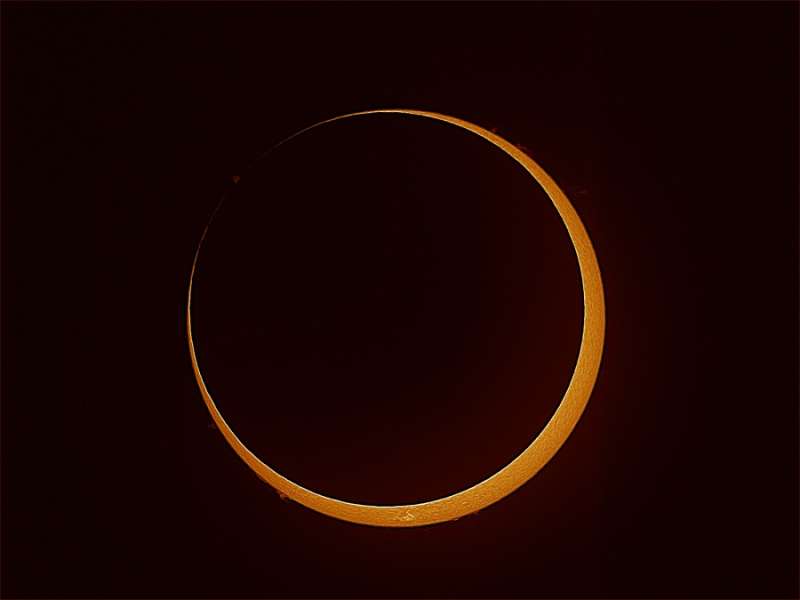Credit & Copyright: Courtesy Cameron McCarty -
MWV Observatory, Coca-Cola Space Science Center, Columbus State Univ. Eclipse Team
Explanation:
This week the shadow of the New Moon
fell on planet Earth, crossing
Queensland's Cape York
in northern Australia ...
for the second time in six months.
On the morning of May 10, the
Moon's apparent size was
too small to completely cover the Sun though, revealing a
"ring of fire"
along the central path of the annular
solar eclipse.
Near mid-eclipse from Coen, Australia, a
webcast
team captured this telescopic snapshot of the annular phase.
Taken with a
hydrogen-alpha filter, the dramatic image
finds the Moon's silhouette just within the solar disk,
and the limb of the active Sun spiked with solar prominences.
Still, after hosting back-to-back solar eclipses, northern Australia
will miss the next and
final
solar eclipse of 2013.
This November, a rare hybrid eclipse
will track across the North Atlantic and equatorial Africa.
MWV Observatory, Coca-Cola Space Science Center, Columbus State Univ. Eclipse Team
1999 2000 2001 2002 2003 2004 2005 2006 2007 2008 2009 2010 2011 2012 2013 2014 2015 2016 2017 2018 2019 2020 2021 2022 2023 2024 2025 |
Yanvar' Fevral' Mart Aprel' Mai Iyun' Iyul' Avgust Sentyabr' Oktyabr' Noyabr' Dekabr' |
NASA Web Site Statements, Warnings, and Disclaimers
NASA Official: Jay Norris. Specific rights apply.
A service of: LHEA at NASA / GSFC
& Michigan Tech. U.
|
Publikacii s klyuchevymi slovami:
annular solar eclipse - kol'ceobraznoe solnechnoe zatmenie
Publikacii so slovami: annular solar eclipse - kol'ceobraznoe solnechnoe zatmenie | |
Sm. takzhe:
Vse publikacii na tu zhe temu >> | |
